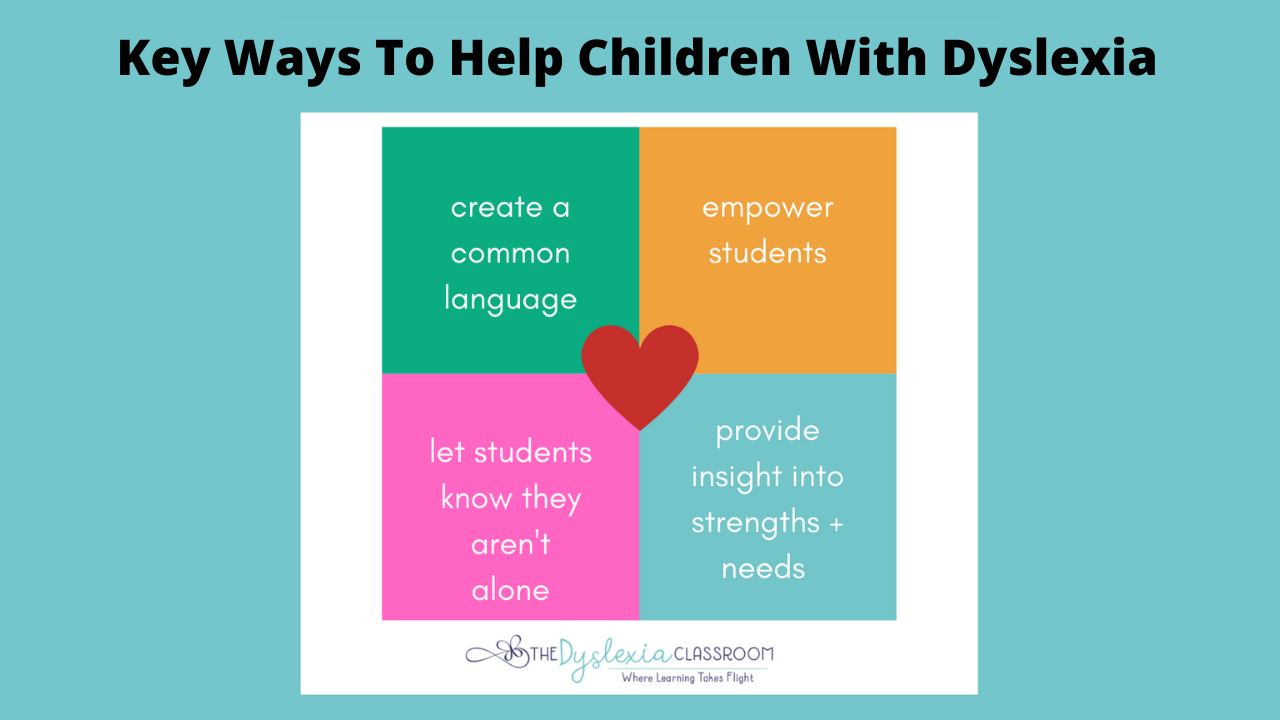7 Key Ways To Help Children With Dyslexia

Hi friends! This week I'm continuing our discussion on dyslexia, particularly how we can help our children with dyslexia. Have you ever paused and thought about how many times you are required to read throughout the day? Emails, notes, road signs, tickers under the news report, menus, letters, etc. The list goes on and on.
Reading well is something that many of us may take for granted. The ability to automatically see letters, and within milliseconds, have that transfer into a word connected to meaning. And yet, for many children and adults, literacy and reading well seem to be out of reach, but is it?
Absolutely not.
Our dyslexic learners, and all students, deserve instruction rooted in what the collective science says about how the brain learns to read. The ability to read well can no longer be accepted as something that is unattainable for specific groups.
We have years of research to show what is needed to unlock the reading code for our students, making reading well a reality. There is so much that we can do to support our students with dyslexia. Let's explore some of those today.

Say the Word Dyslexia
Why? Dyslexia is the most common learning difference and falls under the umbrella of a specific learning disability. It is believed that 15-20% of the population has some form of dyslexia.
When we use the term dyslexia, we:
- create a common language. Saying dyslexia provides a common language for educators, principals, parents, and students.
- provide insights into strengths and needs while also providing a name for the struggles.
- empower those with dyslexia.
- let students know they are not alone.
In 2015, the United States Department of Education sent a letter to all schools clarifying that there is nothing in the IDEA that prohibits the use of the term dyslexia in an IDEA, eligibility determination, or IEP documents. Click HERE to read the letter.
So, let's say dyslexia.
Understanding the Science Behind Reading
As professionals, we should understand the neuroscience behind reading and the processing variance in the dyslexic brain. The dyslexic brain has a different processing system. Neuroimaging studies have shown a difference in the processing systems in people with and without dyslexia. This information from the data collected with imaging deepens our understanding of dyslexia and guides our instructional practices.

Dyslexia is Not Related to Intelligence
Know that dyslexia is not related to intelligence; it is not a thinking disability. The apparent brightness often tends to stump parents and educators into thinking that a dyslexic student needs more time or needs to try harder. Our dyslexic learners are intelligent, innovative, out-of-the-box thinkers, and their unique minds are what this world needs. We need to start shifting how we view our dyslexic students and bring their strengths to the forefront of conversations and reading instruction plans.
Implement Structured Literacy in Classrooms
Dr. Timothy Odegard notes "Structured literacy is the science of reading brought to life." The elements of structured literacy set up ALL learners for success. The International Dyslexia Association coined the term structured literacy to describe the effective reading instruction vital for students with dyslexia. The evidence-based elements of structured literacy work together with the evidence-based teaching principles: explicit instruction that is diagnostic, systematic, and cumulative. It is harmful to none, essential for some, and beneficial to all.
Increase Your Knowledge as an Educator
Growing as an educator better serves all students. You have heard me talk about the importance of teacher knowledge. The International Dyslexia Association states,
"To ensure that all children have access to effective reading instruction, we must ensure that their teachers have both the deep content knowledge and the specific teaching expertise to teach these elements according to these principles."
Understanding the science of reading deepens our knowledge base about the how, why, and what we need to teach. I like to refer to it as a journey to strengthen our knowledge to help ALL students find success.
Create a Dyslexia-Friendly Environment
Designing a dyslexia-friendly environment helps learners to feel understood and encouraged with the proper instruction. You can read more about creating this type of environment HERE on a previous blog post. It also has a link for you to grab a FREEBIE book list, perfect for Dyslexia Awareness Month.
Advocate for Your Students
Be their biggest cheerleader and advocate. Believe in each child and take an active role to understand and advocate for their needs. As your knowledge grows, so will your passion for helping our amazing kids.
Our students need people who understand them, advocate for them, and shine a light on their strengths as they address their unique needs.
Thank you for being on this journey! ✨
I hope you found this post to be helpful. With October being Dyslexia Awareness Month, it is a great time to read more blog posts on dyslexia. Click "dyslexia" in the side bar for more blog posts on the subject.
Today, Thursday, October 7 is Worldwide Dyslexia Awareness Day! Wear red to show your support. ❤️
I also have some other exciting news to share with you!
Oct 16, Saturday - The Demystifying Dyslexia Webinar *LIVE* with Casey Harrison and Katy Vassar
Click here for all the details. We hope you join us!
I'm also part of a new podcast! 🎙
Oct 12, Tuesday - Official launch of the podcast Together in Literacy
A podcast with hosts Casey Harrison and Emily Gibbons talking all about dyslexia, literacy, and the social-emotional connection. Stay tuned for a link to the podcast.
Have a great week!
Casey

This information is the intellectual property of @2016 The Dyslexia Classroom®. Do not use or repurpose without expressed permission from The Dyslexia Classroom®. Please email [email protected] for permission, and give The Dyslexia Classroom® an attribution if you use, reference, or quote/paraphrase copyrighted materials. This includes but is not limited to blogs, social media, and resources.



